There is something very special about the kajjayas given as prasada at the Iguthappa temple. The ingredients are simplicity itself – rice flour (made from soaked, dried and powdered rice) cooked in jaggery syrup, and bananas. And yet, they come together with a certain je ne sais quois.
No matter how delicious the versions made at home are, these remain unique in their appeal. Perhaps if you could capture the scent of wood smoke, freshly cracked coconuts, sandalwood, camphor and sampigé (Magnolia champaca), then shake them all together with a dash of cool, clean air and brilliant blue skies, topped with a large dose of serenity, you might come close. But some things are just best enjoyed at the source.
Of the various fried sweets made from a foundation of rice flour and jaggery, there is a small subset that falls into the category of kajjaya. Subtle variations set them apart, but they are essentially fried dumplings or small cakes made from ground rice and jaggery with a few added ingredients like bananas and coconut, sesame or poppy seed, and spices like cardamom or fenugreek.
With the availability of maida (refined wheat flour), some substitution or combination with rice flour became popular, making for a lighter textured sweet. Every household has its favourite version of kajjaya, so if your neighbour’s doesn’t match yours, put it down to the quirks of the cook, or popular taste, prevailing!
My grandmother had her own special kajjaya treats for our tea and snack times. One was balé kajjaya (also known as balé murkk). These, she made from a combination of maida, bananas, and jaggery. In this instance, she did away with the rice flour entirely, using maida instead, which made the kajjayas pillowy soft. Then there was the deluxe version – appa kajjaya. Here, the batter was made with a combination of rice flour and maida, enriched with fresh grated coconut, poppy seeds and a touch of cardamom.
Biting through the deep brown crust, crisp from the rice flour and caramelizing banana and jaggery, into a soft cakey centre, nutty and warm with cardamom and poppy seed was sheer bliss. Make that sheer, addictive bliss. The childrens’ counting song “one potato, two potato,…” could very easily have been a written observation on how we devoured those kajjayas – substitute the potato with kajjaya and you’ll get the drift!
One potato, two potato,
Three potato, four;
Five potato, six potato,
Seven potato, more!
I think the name appa kajjaya might come from the pan it was traditionally made in – a cast iron griddle (there are versions made of stone too) with small depressions for shallow frying sweet or savoury batters. It probably comes from the Konkani, appé kayli, a pan used for preparing both sweet and savoury appé. I don’t recall my grandmother using one of these pans. She deep fried the appa kajjyas in a kadhai. There is , however, another sweet known as chittani puttu which is cooked in a similar griddle.
There are versions of this pan used across many cuisines, and they can be found in other parts of Southern India, Bengal, and as far afield as Japan and Denmark. Whether you’re cooking appé, neyappam, ponganalu, takoyaki, or aebleskiver, this is a wonderful piece of kitchen equipment to have. Not only does it allow you to fry tidy portions of batter in the barest minimum amount of oil, it also produces the most magnificently crisp crust on foods! I use an aebleskiver pan for frying small batches of kajjaya.
Appa kajjaya
- 400gms ripe bananas (preferably mara balé or any creamy fleshed banana with an optional squeeze of lime juice)
- 75gms plain flour
- 50gms rice flour
- 1 1/2 cups fresh grated coconut
- 2 tbsp khus-khus (white poppy seed) very lightly roasted
or 2 tbsp brown (unhulled) sesame seed, lightly roasted - 5 tbsp jaggery (you might want more if you prefer things on the sweeter side)
- 1/4 tsp ground cardamom
- 1/4 tsp baking soda
- A pinch of salt
- Oil for frying
Sift the flour, rice flour, salt and baking soda together.
Mash the bananas to a smooth pulp and mix all the ingredients together to a soft batter. If it looks a little too wet, don’t add more flour.
Allow it to sit for a few minutes and it should thicken to easy dropping consistency.
Heat the oil in a kadhai or wok and drop teaspoonfuls of the mixture in gently.
Fry on medium heat, stirring the kajjayas around occasionally.
When they are an even brown on the outside, remove and drain on absorbent paper.
Cool, then attempt to store in an airtight container. Good luck with that! 😉
Makes approximately 36 bite sized kajjayas.

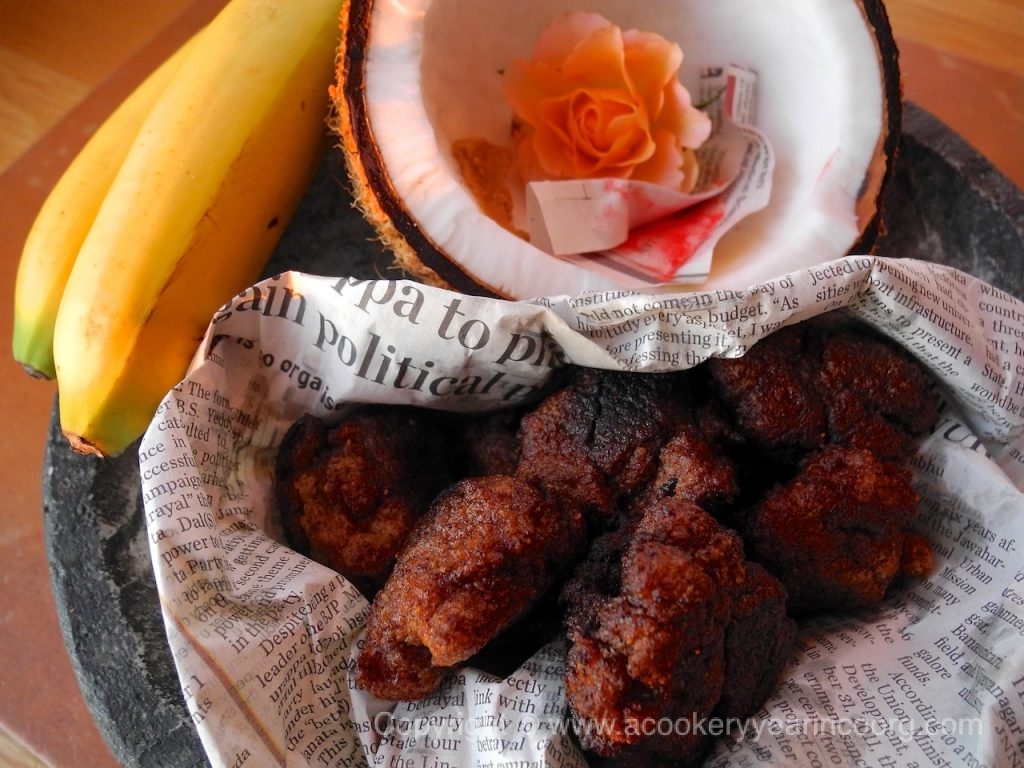
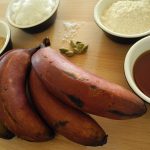
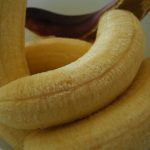
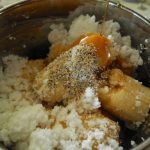
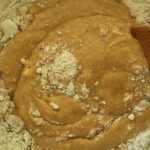
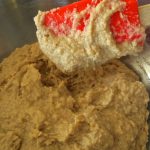
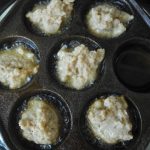
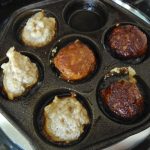
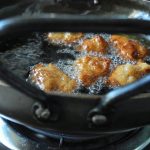
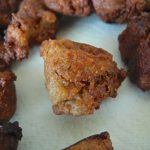
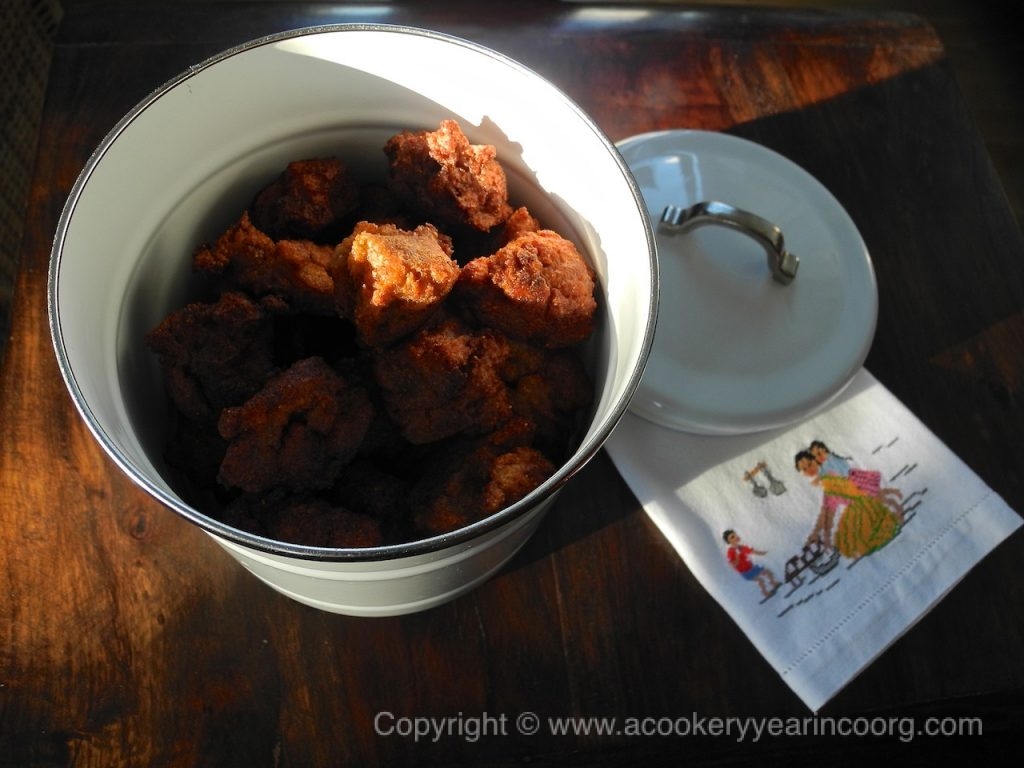
Ahhaa… Rasa Rasa 🙂 🙂 🙂 🙂
I miss homeeeeeeeee………
The best remedy for homesickness is a taste of home, Kodava_1. How about cooking up some kajjaya- it’s as easy as one, two, three! 🙂
I made baale nurk yesterday.. Mum’s Receipe – Bananas+Maida+(very lil Rice Flour to make it crisp)+Pinch of Salt+Sugar+small portion of Semolina+Sesame.
It was yummm 😀 Ate all evening and then stored some for today.
Thank you Shalini… Love your pictures, they make everybody’s mouth water 😛
Muthappa
That’s great, Muthappa! Next time I make these i will try it with a little semolina in the mixture.
Good to hear you’re enjoying these posts- thank you!
Semolina is just an alternative for Khus Khus.
Khus khus is banned in UAE and i can get arrested at the airport if i get them 😛
Ah, yes, the white poppy seed is banned there I know! The most commonly available one here is the black kind (more a blue-grey really) but Indian stores do sell khus-khus.